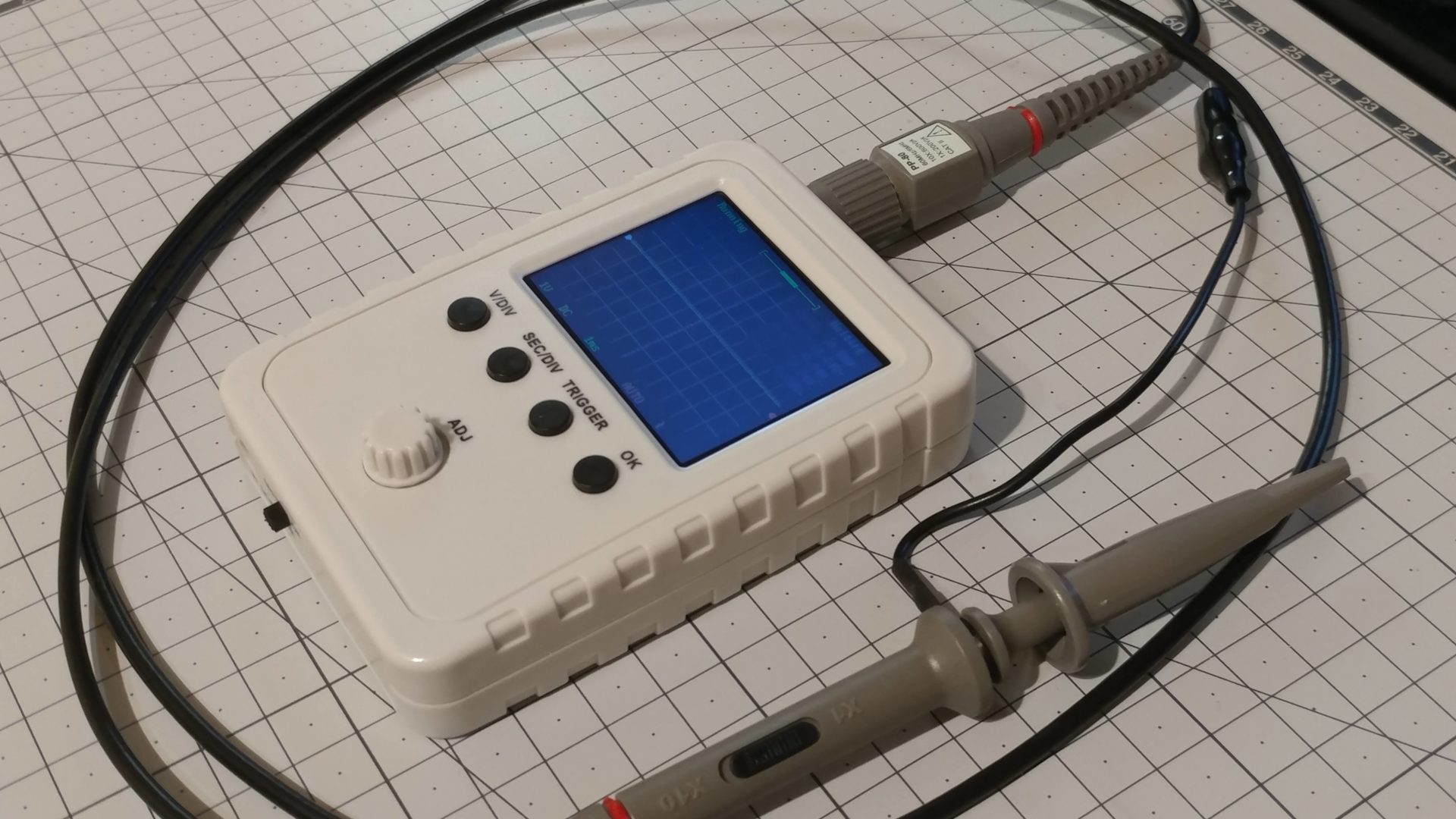DSO150 mini oscilloscope is great tool not only for beginners or professional electronics engineers, but useful as remote tool used by car mechanics, audiophiles, musicians. If you need to measure all sort of signals but cannot afford professional oscilloscope, you should have this in your toolbox!
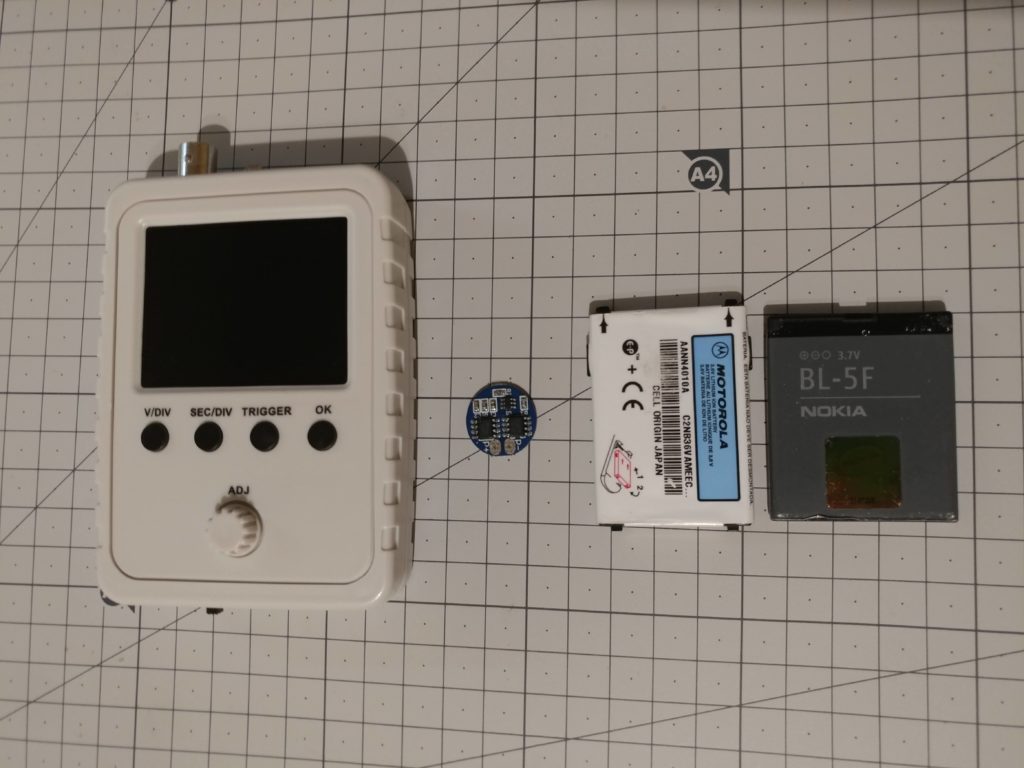
Of course this cheap oscilloscope has some limits, no battery, only one channel, up to 200KHz resolution. But we can overcome one of it’s limits and make portability of this device a huge advantage. Add batteries!
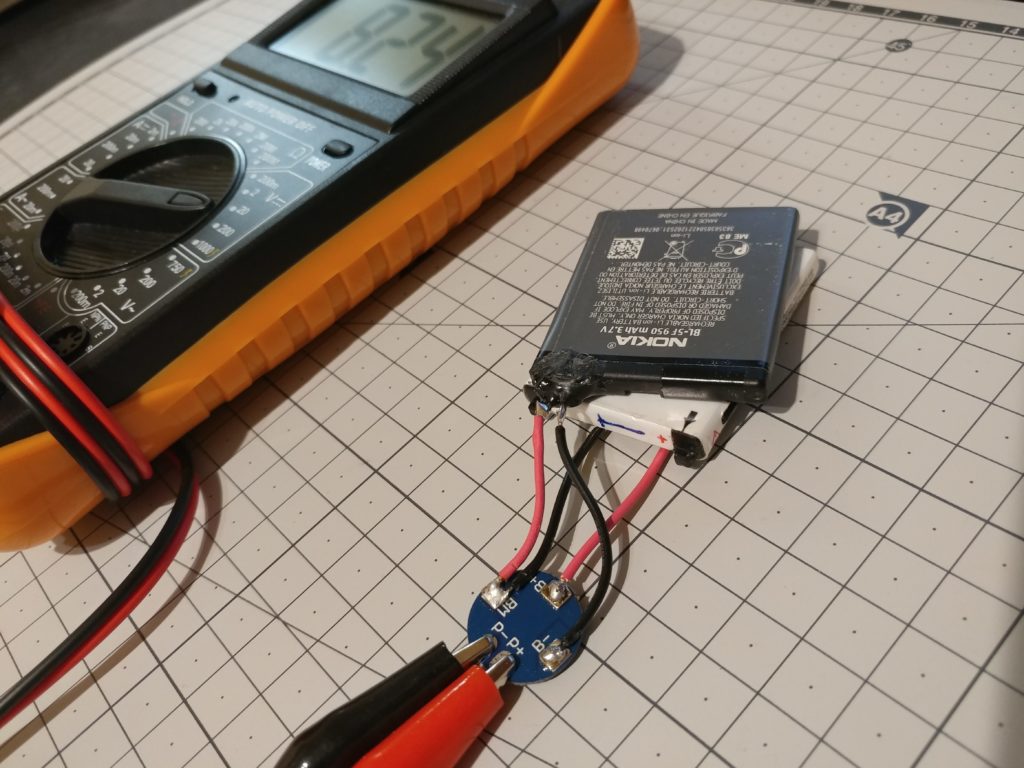
Simple way is to use powerbank or attach some 9V battery outside the enclosure. But ideal solution is to add rechargeable lithium-ion battery inside! I used two 3.7V old Nokia and Motorola cell phone batteries, both has 1000mAh and gives about 8.24V connected in series, just enough to run oscilloscope.
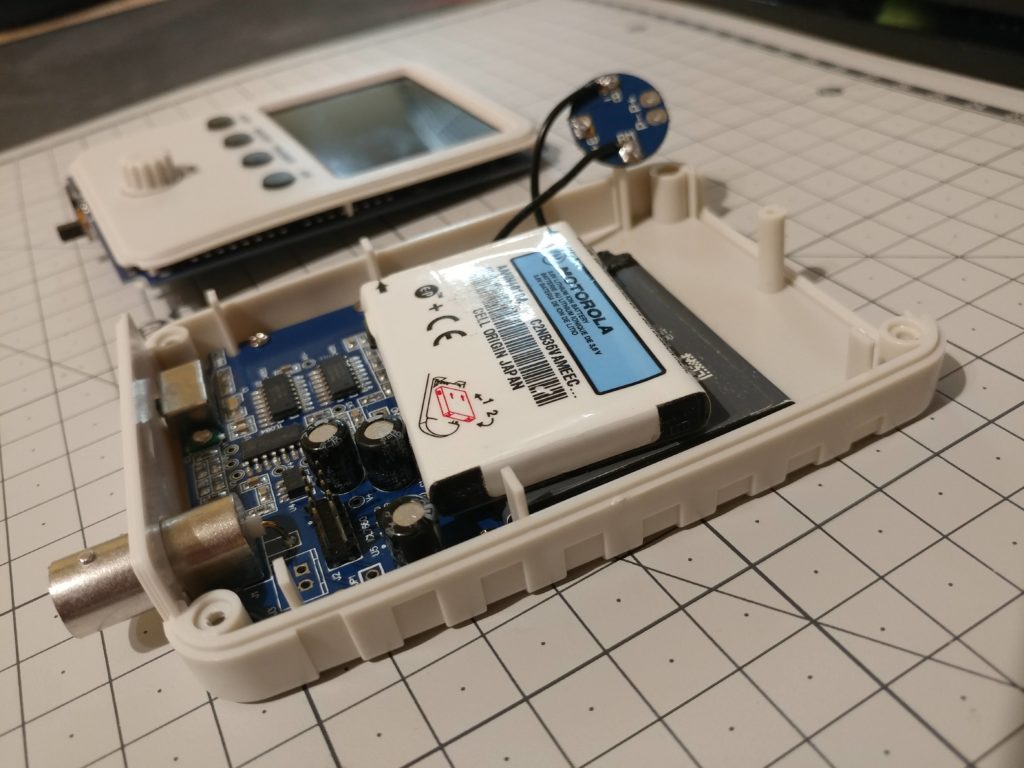
To charge both batteries I’m using 2S 5A Li-ion battery charger with BMS protection, connected to oscilloscope 9V power input socket.
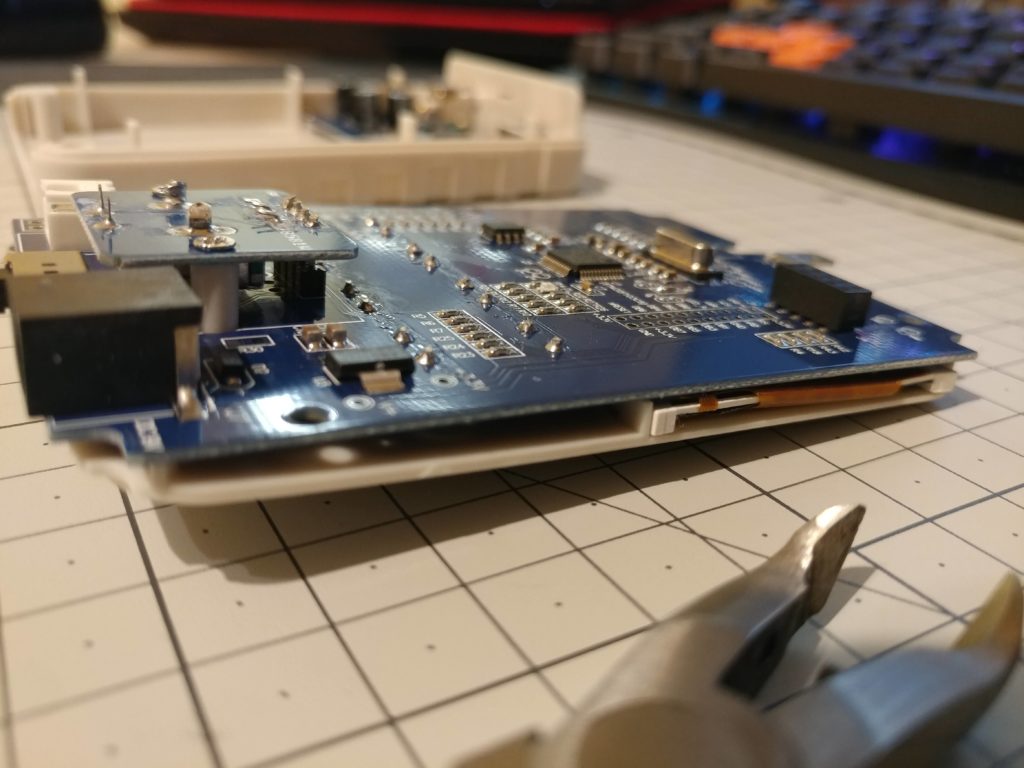
To fit batteries inside this enclosure I had to shorten some protruding pins of the encoder pcb and tact switches below.
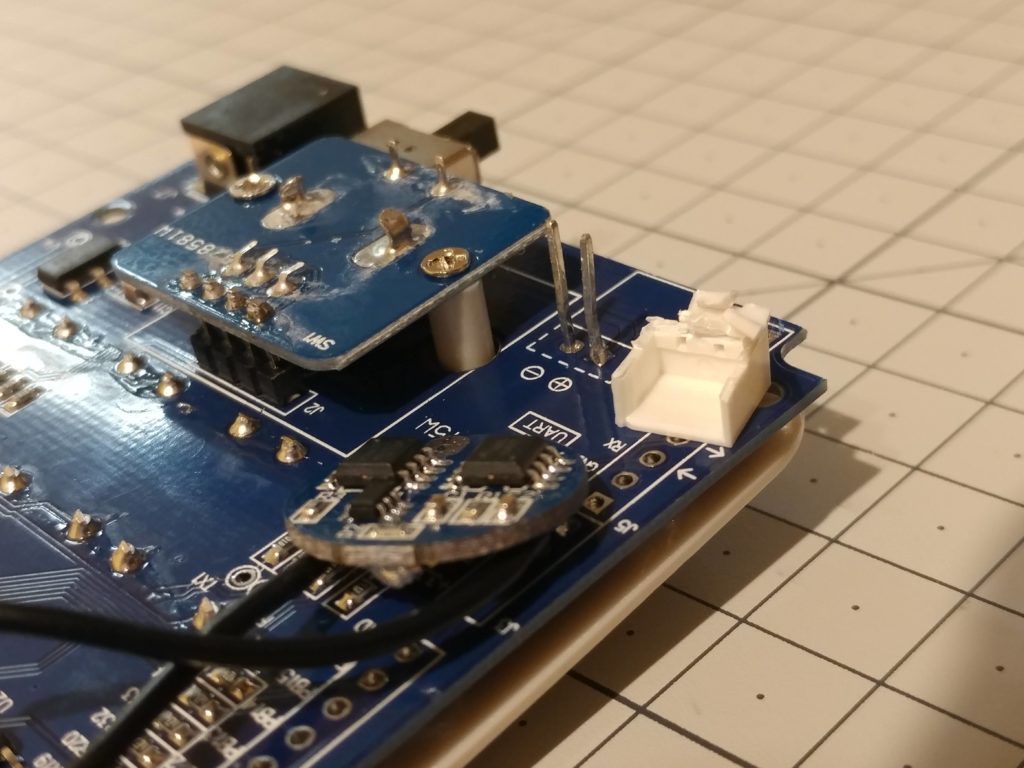
Also I had to cut out this white socket and straighten the + – pins. Btw. I don’t know why they put this power socket inside, maybe there is some version of this oscilloscope with the batteries inside already?
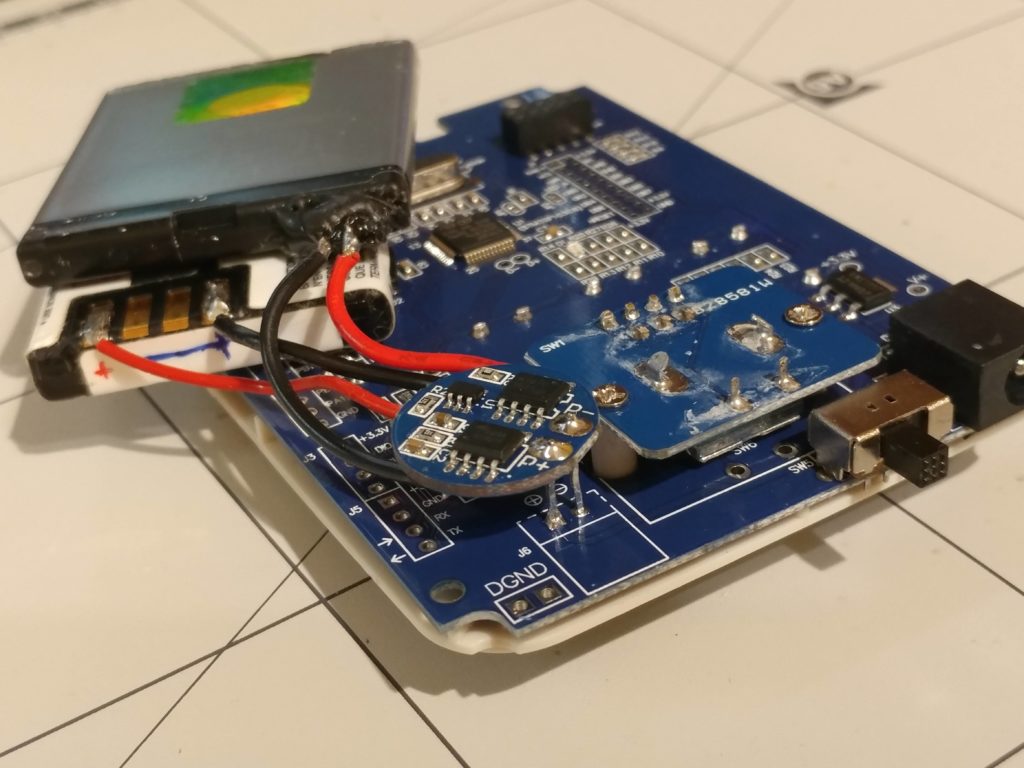
Solder the BMS board to the pins according to the polarity. It fits like a glove!
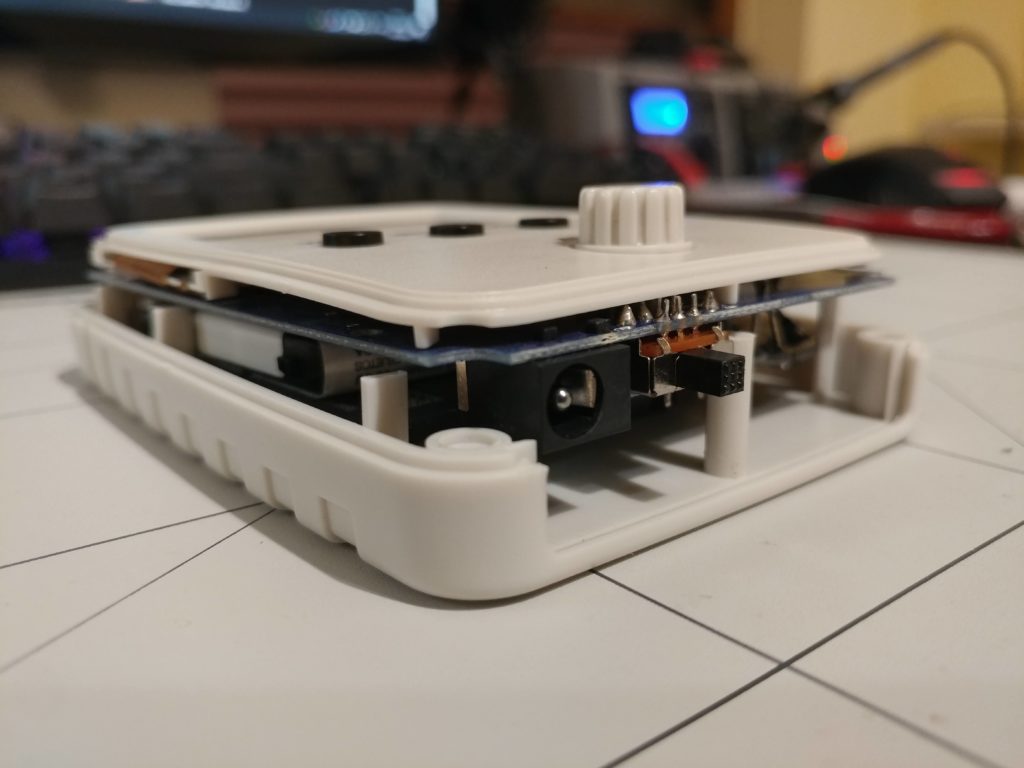
Now we just need to fit the batteries between boards, luckily there is enough space in there!
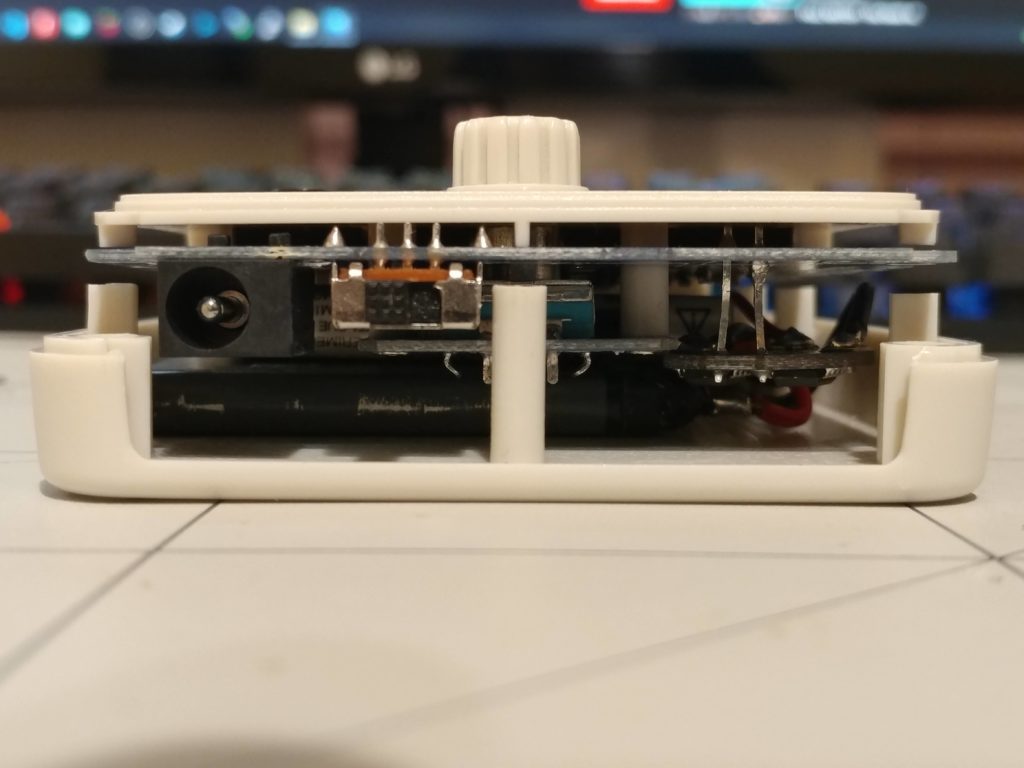
Put enclosure together, charge the batteries, BMS does not have any led indicators unfortunately, but charging both batteries about an hour will be enough.
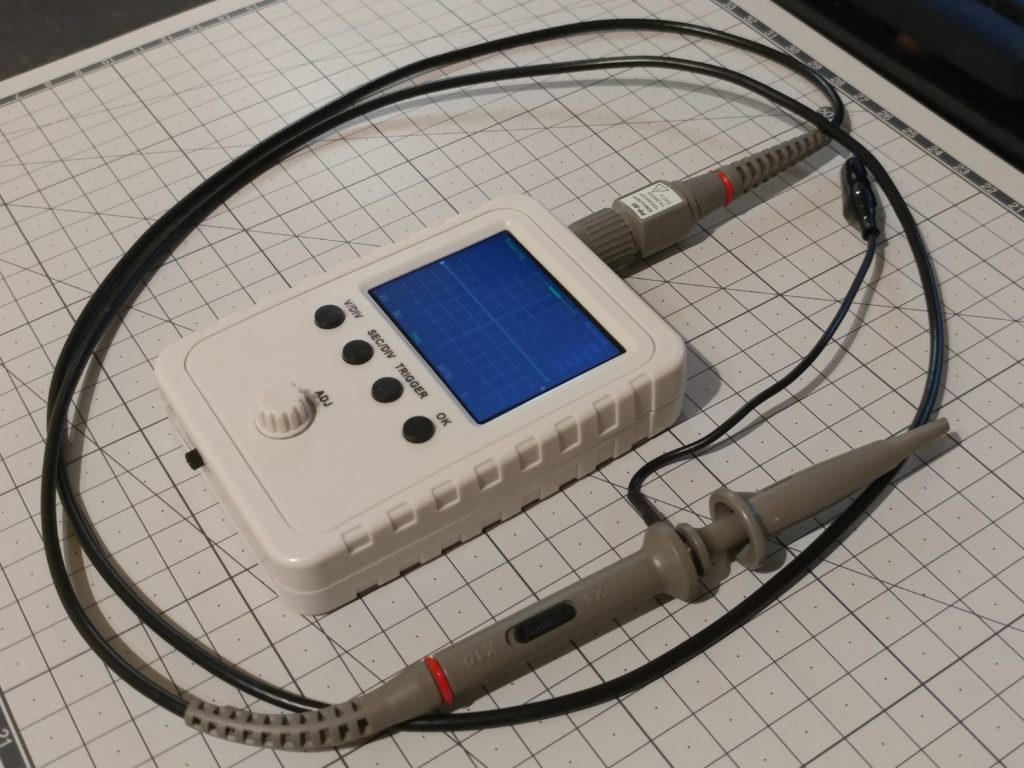
It’s now time to test the oscilloscope! If it’s not running, make sure there is no short circuits, you should probably cover all connections with kapton or insulation tape. Second thing to check is the voltage on the batteries, they should pass the 8V, if not, full charge both batteries. You can measure voltage of the batteries on the power in socket with switch set to ON position.
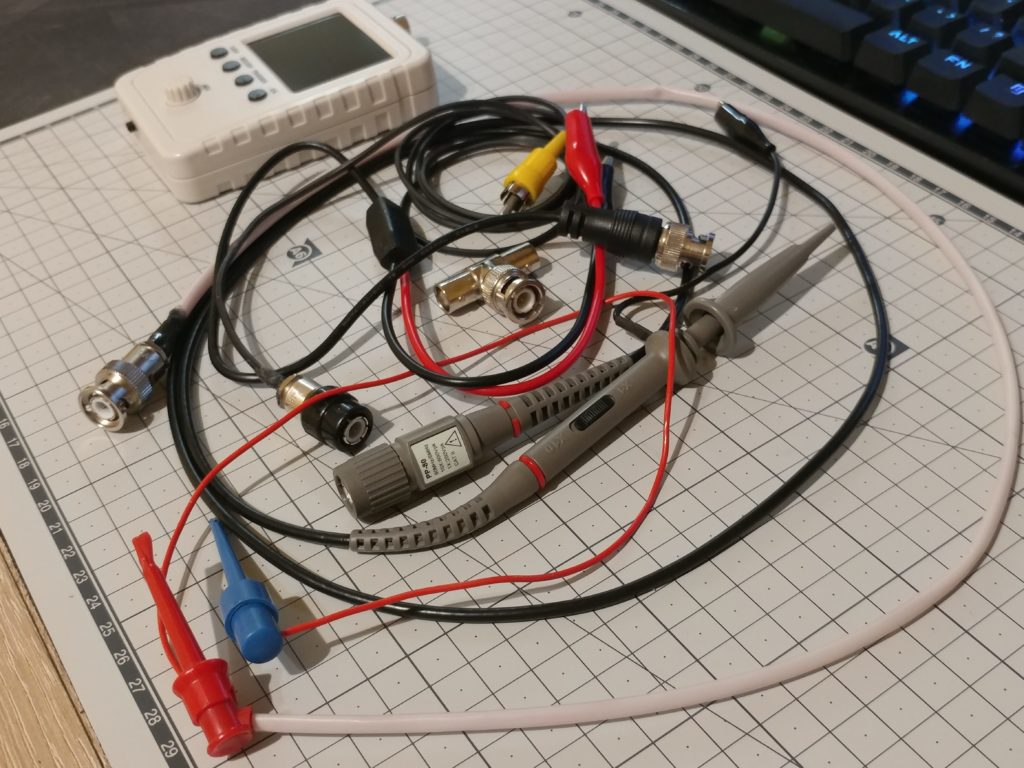
Finally we have truly portable, pocket size oscilloscope in our hands! DSO150 is equipped with alligator clips connector probe, which might be useful, but I’m recommending to use professional oscilloscope 1:10 probe. Also I made myself some more custom probes, one with precise clippers and second one with RCA connector, to measure audio signals. Then I can use RCA converters for 6.35 and 3.5 mm jacks.
If you want to get DSO150 oscilloscope for yourself, here is one with the probe in the set – https://s.click.aliexpress.com/e/_9hPeH4
Here is 2S 5A BMS module used in this project – https://s.click.aliexpress.com/e/_AdI2tU
Here is BL-5F Li-ion battery you can use, it’s Nokia replacement but will fit inside DSO150 – https://s.click.aliexpress.com/e/_Ar52We

